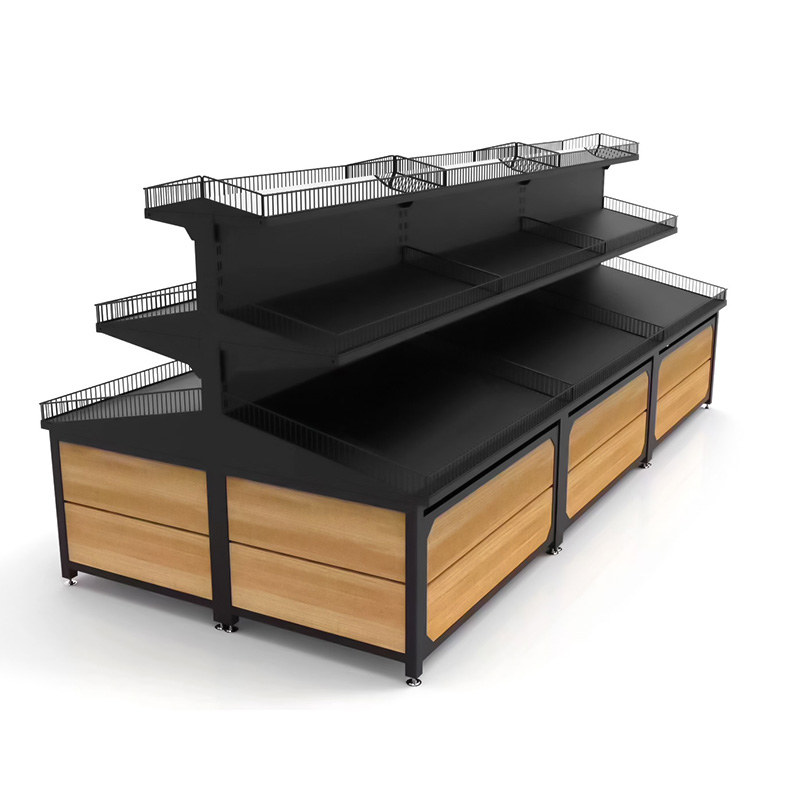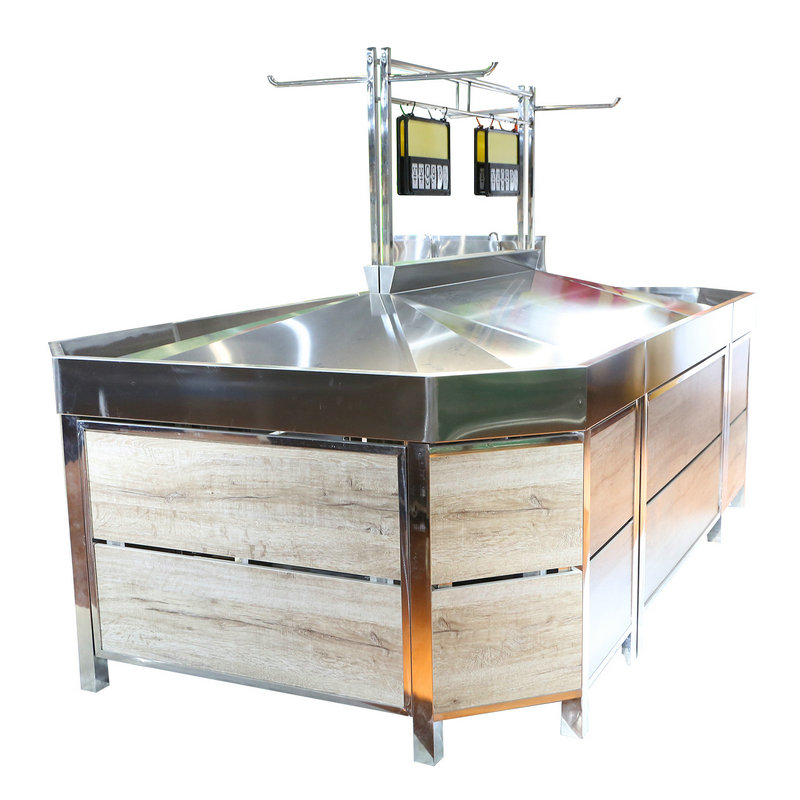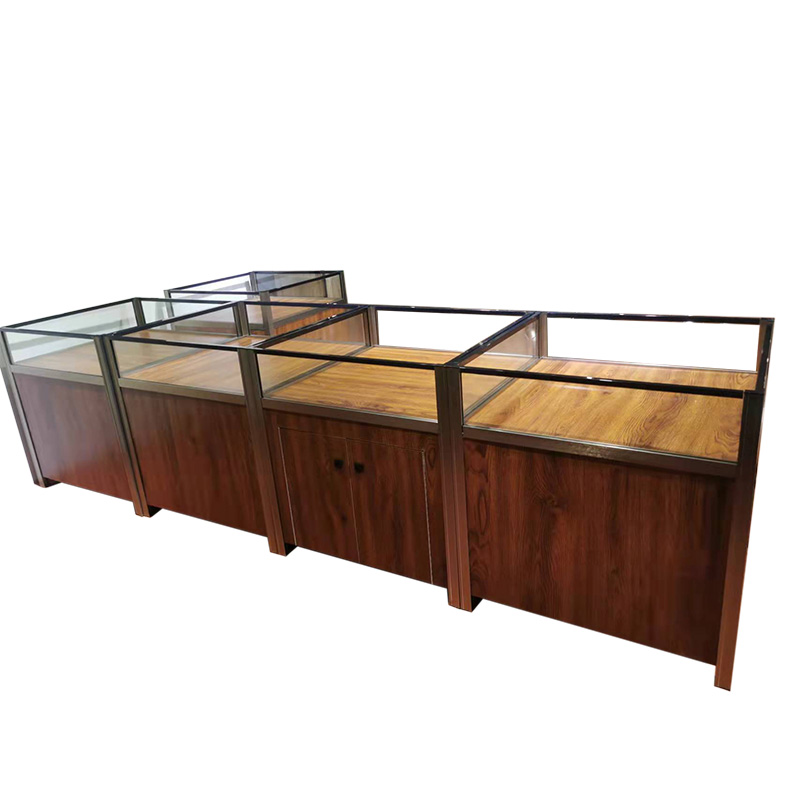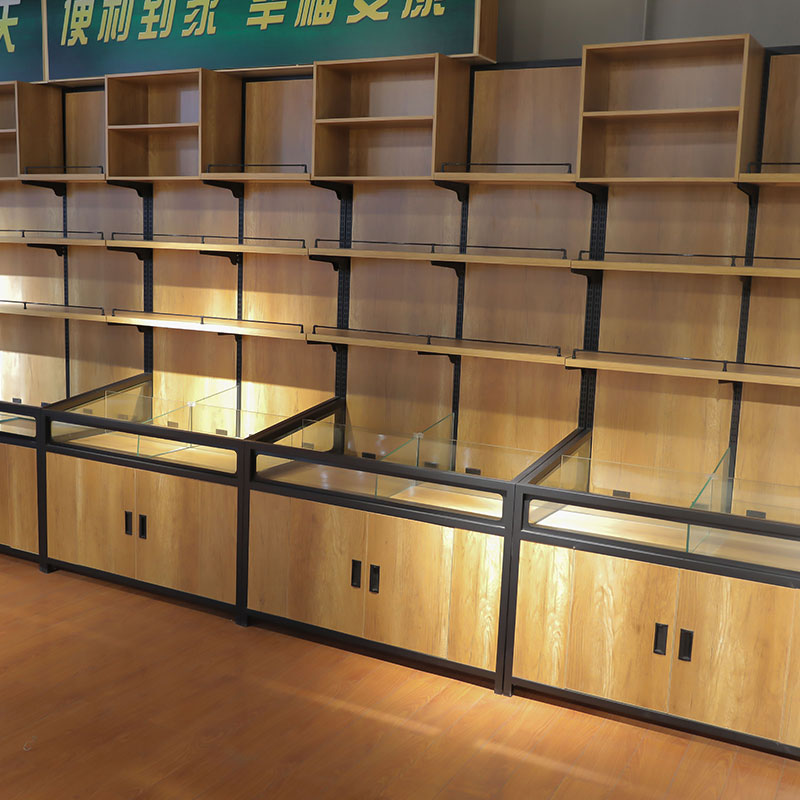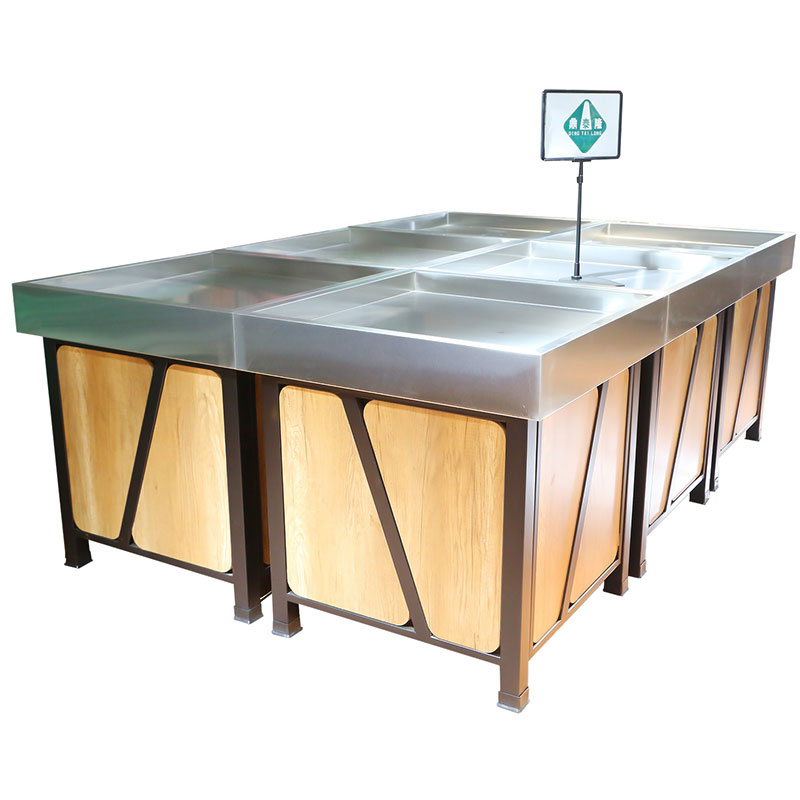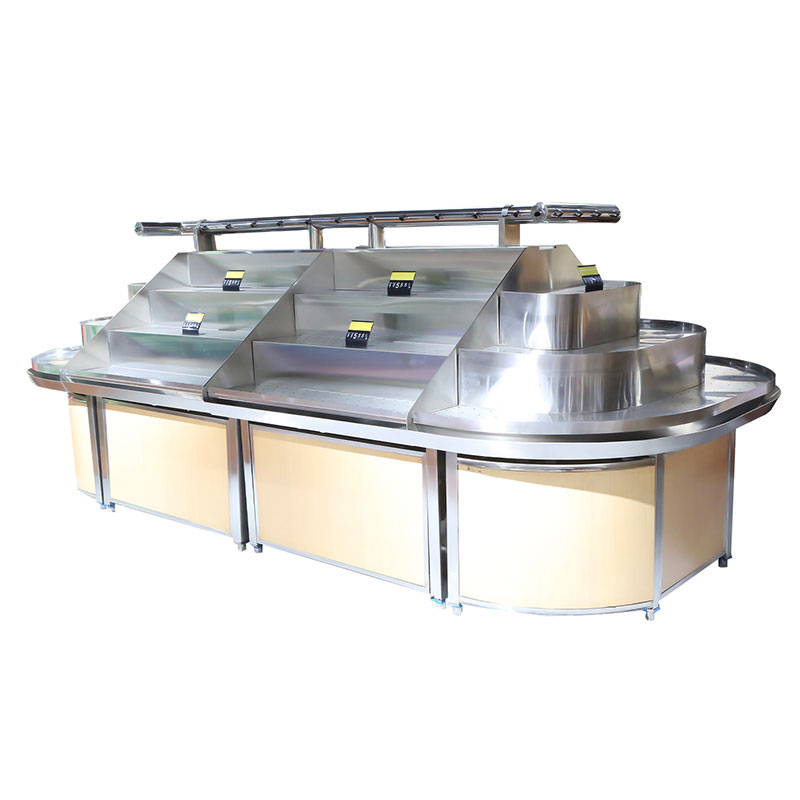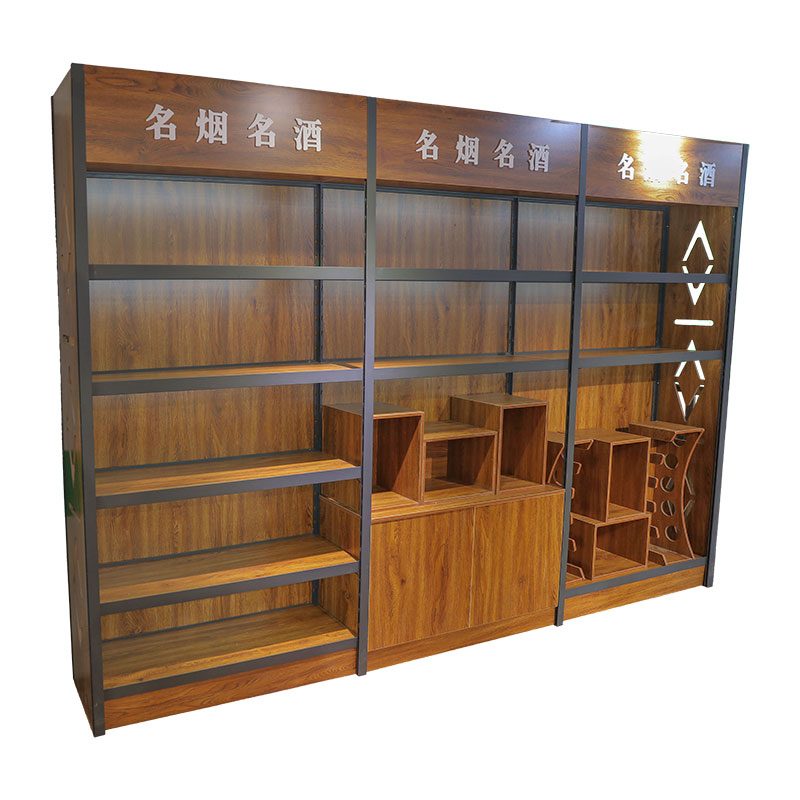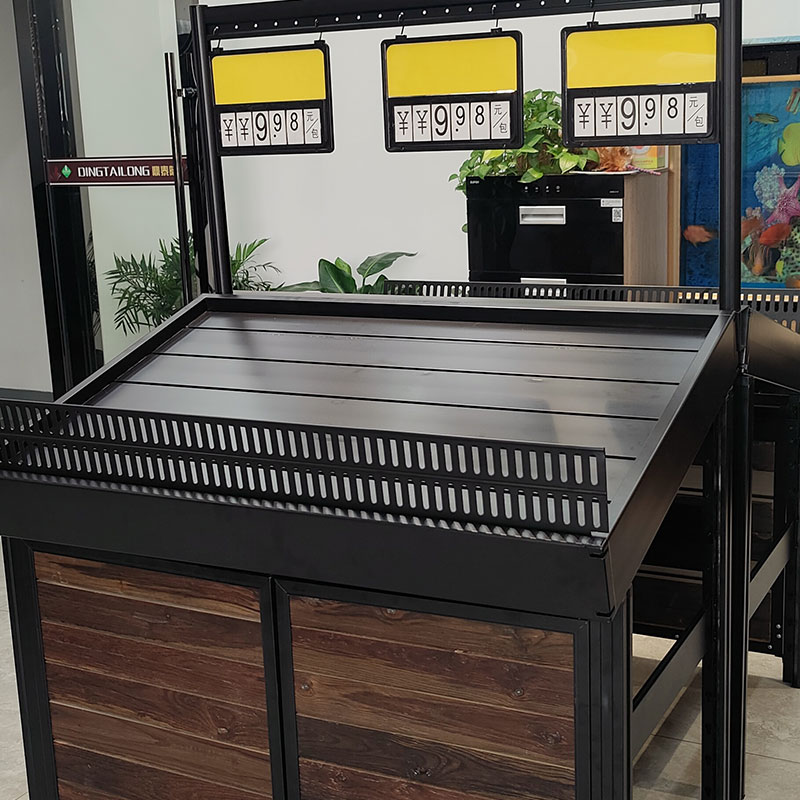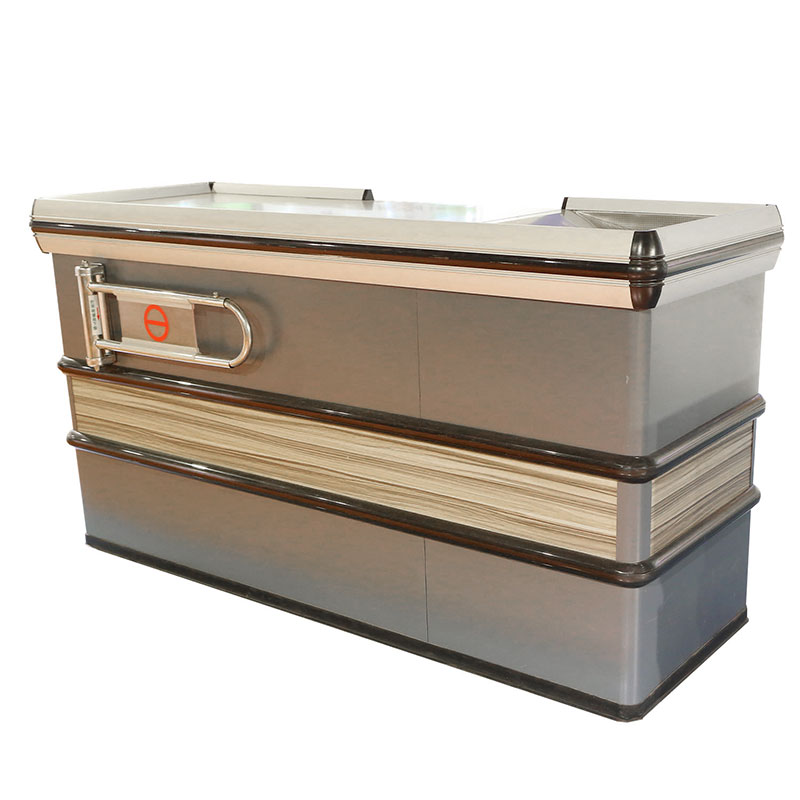Designing supermarket shelving to meet the sales flexibility of different goods involves creating a versatile and adaptable shelving system that can accommodate a wide range of products, from small items like spices to larger items like appliances. Here are some strategies for designing flexible supermarket shelving:
1. Adjustable Shelving Heights:
Use shelving units with adjustable heights or brackets. This allows you to change the spacing between shelves to accommodate different product sizes. For example, you can lower shelves to display larger items or raise them for smaller items.
2. Modular Shelving Systems:
Invest in modular shelving systems that can be easily reconfigured. These systems often feature interchangeable components, such as shelves, brackets, and dividers, allowing you to adapt the shelving layout as needed.
3. MultiFunctional Shelving Units:
Select shelving units that can serve multiple purposes. For instance, some shelving units have shelves on top and hooks or pegs on the sides or underneath, allowing you to display a variety of products, including hanging items or promotional signage.
4. Wire or Grid Shelving:
Wire or grid shelving systems provide flexibility for displaying a wide range of products. They are open and airy, making them suitable for items that require ventilation, like fresh produce, or for displaying items on hooks or hangers.
5. Adjustable Shelving Angles:
Consider shelving units with adjustable shelving angles. These can be tilted to create slanted displays for products like books, magazines, or packaged snacks, making them more visible and accessible.
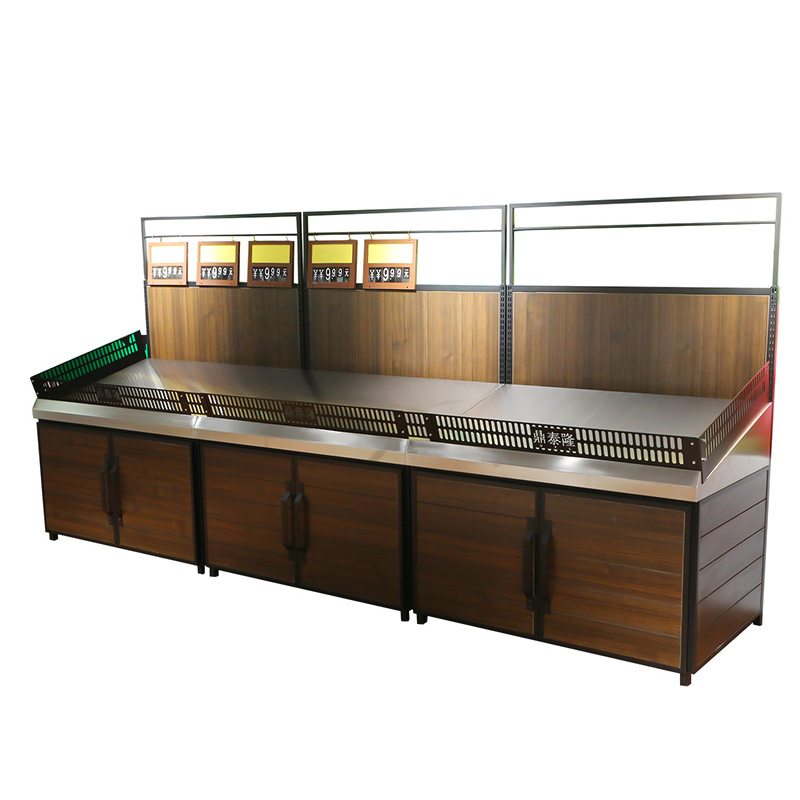
6. Specialized Shelving for Specific Departments:
Customize shelving for specific supermarket departments. For example, design bakery shelving with adjustable trays for various bread sizes or create wine shelving with slots for different bottle shapes and sizes.
7. Label Holders and Signage:
Incorporate label holders and signage slots on shelves to make it easy to identify and price different products. This allows for quick updates and changes as product assortments evolve.
8. Modular Display Bins and Baskets:
Use modular bins and baskets that can be rearranged to accommodate different items. These are particularly useful for loose or irregularly shaped products.
9. Freestanding Displays and Gondolas:
Incorporate freestanding displays and gondolas strategically throughout the store. These versatile fixtures can showcase featured products, seasonal items, or promotions without affecting the main shelving layout.
10. Transparent or Adjustable Shelf Dividers:
Transparent or adjustable dividers can be used to separate and organize products within a single shelf, accommodating different sizes or categories of goods.
11. Planogram Software:
Utilize planogram software to optimize the placement of products on the shelves. This software helps determine the most effective arrangement for each category, taking into account sales data and product dimensions
By implementing these design strategies and using flexible shelving solutions, supermarkets can adapt to changing product assortments, seasonal demands, and customer preferences while optimizing sales and ensuring a visually appealing and organized shopping experience.

 English
English русский
русский Deutsch
Deutsch Español
Español 中文
中文